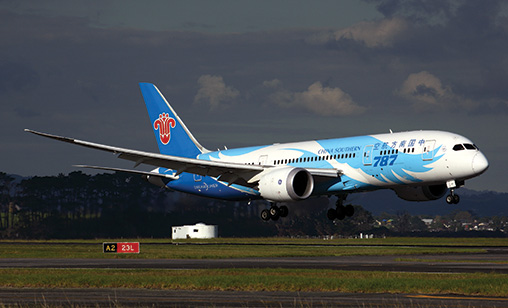News Backgrounder
Air cargo new darling of struggling Mainland airlines
The world’s passenger planes may be 99% grounded but demand for freighters is falling short of supply, particularly in China. Associate editor and chief correspondent, Tom Ballantyne, reports.
July 1st 2020
Air cargo demand may have fallen by 19% year-on-year across the Asia-Pacific in May, the Association of Asia Pacific Airlines (AAPA) has reported, but Chinese air freight operators are going against the trend and scrambling for capacity. Read More »
VariFlight, a Chinese aviation data and solutions services provider, said outbound cargo flights from China reached 4,910 in May, a surge of 113.66% year-on-year, and inbound cargo flights to the Mainland jumped 93.42%, to 4,383. The data included only designated freighters and not cargo airplanes converted from passenger aircraft.
 |
China’s favourable figures are primarily the result of its leading role in supplying the world with pharmaceuticals and equipment to combat the COVID-19 pandemic, including face masks and other personal protective equipment (PPE).
The Civil Aviation Administration of China (CAAC) said cargo flights have been increasing in frequency between China and 84 international destinations in 51 nations and regions. But elsewhere it has been a different story.
Latest cargo statistics from the International Air Transport (IATA), for May, showed a slight improvement in the market, but with capacity unable to meet demand as a result of the loss of belly cargo operations. Globally, demand during the month fell by 20.3% compared with a year earlier.
IATA said Asia-Pacific airlines reported demand for international air freight declined by 21.3%, a solid improvement over April’s drop of 25.2%. Seasonally adjusted freight volumes for May rebounded slightly and have now reached 75% of their pre-COVID-19 levels. Shipments of personal protection equipment are helping to support airlines in the region, the airline association said.
AAPA director general, Subhas Menon, said offered freight capacity decreased by 20.1% for May and average international freight load factor rose marginally, by 0.9 percentage points, to 60.9%. The results reflected the capacity crunch experienced in preceding months from a sharp decline in passenger aircraft belly-hold space.
“There is a severe capacity crunch in air cargo,” said de Juniac. “The result is damaging global supply chains with longer shipping times and higher costs. Airlines are deploying as much capacity as possible, including special charter operations and the temporary use of passenger cabins for cargo. Governments need to continue to ensure vital supply lines remain open and efficient,” he said.
“While many have responded with speed and clarity to facilitate the movement of cargo, government red-tape, particularly in Africa and Latin America, is preventing the industry from flexibly deploying aircraft to meet the demands of the pandemic and the global economy.”
IATA is urging governments to accelerate approvals for cargo operations, expedite customs clearance for urgently needed medical supplies, ensure there is adequate staff on the ground and provide the land-based infrastructure necessary to move cargo efficiently.
| China funds passenger-cargo aircraft conversions China has certainly been one government that has supported the air freight sector. In late May, the Ministry of Finance and the Civil Aviation Administration of China (CAAC) announced it would provide financial support for Chinese and foreign carriers operating cargo deliveries using commercial aircraft. Airlines also could receive 80% compensation for costs involved in converting passenger aircraft into freighters and would benefit from financial incentives if flying international cargo flights between April 1 and June 30. Eastern Air Logistics, the freight unit of Shanghai-based China Eastern Airlines, is converting 14 wide-body jets into freighters, which will create the largest passenger aircraft-converted wide-body fleet in the Mainland market. Sichuan Airlines, headquartered in Chengdu, had three A330 freighters before the pandemic outbreak and has retrofitted eight existing passenger aircraft to freighter configurations. “So far, our cargo flight networks have covered Southeast Asia, Europe, North America and the Middle East,” Sichuan Airlines president Li Haiying, told local media. “Sales revenue of the 11 freighters is about 20 million yuan (US$2.8 million) daily. The air cargo business has bright growth prospects and we will continue to develop it.” |